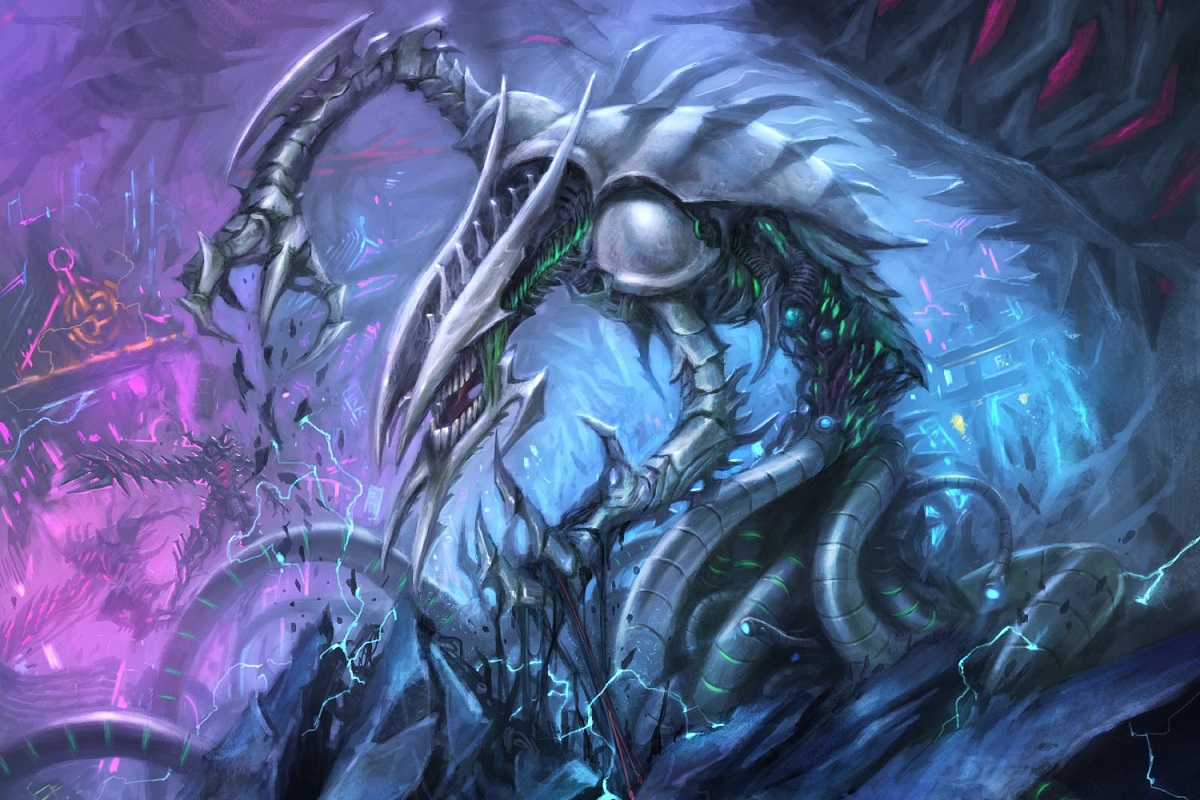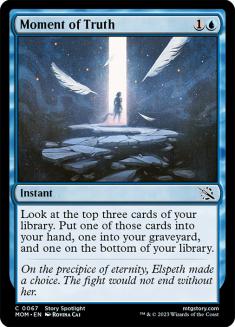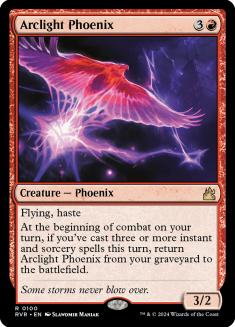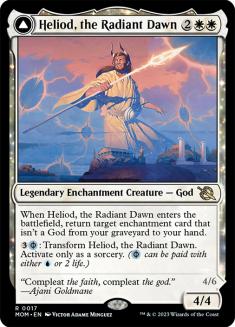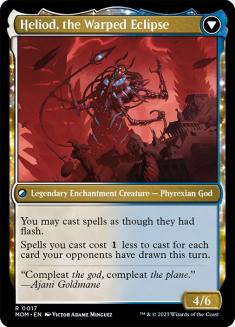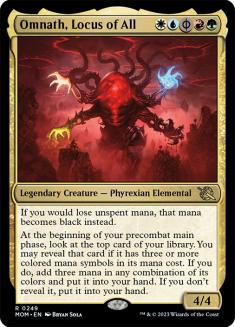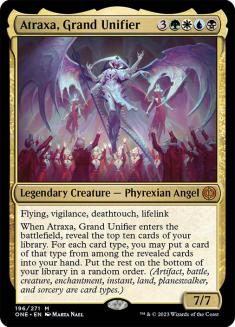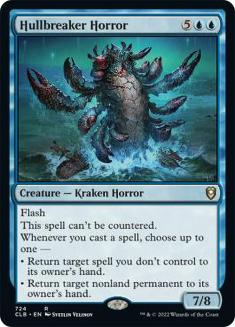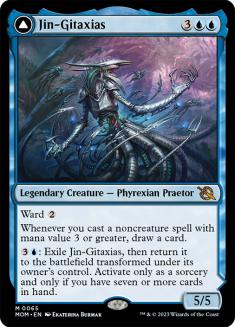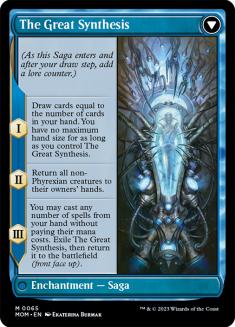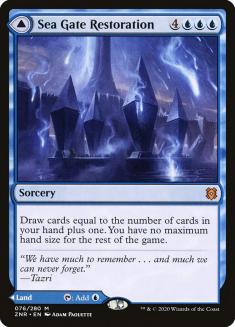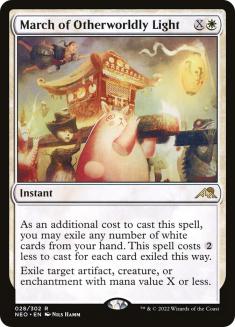The very moment I begin to settle in on a new control deck in Standard, preview season hits us. The rapid-fire release of sets has its negatives; however, having continuous access to new control weapons is quite the perk. With each new set release, I scour the previewed cards to see what best fits in my control shells across all competitive formats. Surprisingly, Modern and Pioneer seem to get hooked up with each Standard-legal set recently. I hope that trend continues with March of the Machine.
In this set, only a few cards have been shared with the public. I already like what I see, with cards that may see significant competitive play. My favorite card of the lot may be stuck in Standard, but I am fine with that. It has become difficult to make cuts in the older formats, which is a good problem for control players to have.
Moment of Truth
Moment of Truth is the first preview card that caught my eye. It is a draw spell that provides you the best option of the three, bottoming the card you want later, and placing the card that has graveyard implications (or is now unneeded) right where you want it. This is a unique design for a common draw spell and will have an impact in blue decks that actively use the graveyard. With Anticipate, that option was never available.
Izzet Phoenix in Pioneer would be a happy recipient of this card draw spell. That is the deck that immediately comes to mind, even though there are many other options that take advantage of their graveyard. In a traditional Standard control deck, drawing a card, bottoming some dead removal against the wrong matchup, and putting a Memory Deluge in the graveyard could lead to a strong showing that game. The potential applications for Moment of Truth in competitive play are significant.
Heliod, the Radiant Dawn // Heliod, the Warped Eclipse
The next fun card from March of the Machines is Heliod, the Radiant Dawn. This one did not immediately stick out to me, but it has a lot of power packed into a reasonable mana value. Paying four for a 4/4 with an enters-the-battlefield trigger is not a bad deal. That trigger can return powerful enchantment-based removal, in addition to other things that we may not have seen just yet. Having that replacement effect immediately puts it into the playable category, a new requirement for all creatures in Magic.
Once Heliod resolves, the transformation cost is a reasonable three mana. When it returns transformed as Heliod, the Warped Eclipse, it gives all spells in the deck flash and reduces their cost by one. Even though it is much weaker, it gives me Teferi, Time Raveler vibes, providing an effect that has been sorely missed. Casting a bunch of sorcery-speed spells on the opponent’s turn brings me joy, and that is the main reason why I am bringing up Heliod now. The icing on the cake is the additional two toughness, making the transformed side a formidable opponent in battle.
Omnath, Locus of All
I must mention Omnath, Locus of All and how absurdly good it will be. I hope we have learned our lesson this time around with four-cost Omnaths, but there is a good chance that this version will also be broken. It does not provide the same, immediate effects, even though it effectively ends the game if left alone. With the choice to add a bunch of mana or draw a card, Omnath provides a similar source of power as its recent predecessor. This version is not as good as Omnath, Locus of Creation, but it does present a problem for any deck that dares to leave it on the battlefield for a turn.
The Need for a Control Win Condition
Control in Standard is lacking something to give it that edge against the grindier decks, especially those featuring Atraxa, Grand Unifier. I have had success against those decks overall, but the time to finish a match concerns me. Finishing the game with a single planeswalker is a marathon plan, and the answers to them are too good. I have resorted to decking my opponent more times than I should have to, a problem that can be rectified by a strong win condition.
Hullbreaker Horror is decent against these expensive Atraxa decks, but it is horrific against the quicker threats of Standard. I miss the days when I could slam a relatively hexproof creature and halt attackers, while also having it be strong against the slower decks. Seeing Jin-Gitaxias previewed gives me some hope in that department, as it hits the battlefield with many of the qualities I like to see out of a control deck win condition.
Jin-Gitaxias (the Front Half)
The power and toughness of Jin-Gitaxias are mighty, giving me The Scarab God vibes. It is slightly resilient at ward 2, but that is not as foolproof as many of the win conditions of old. This minor protection worries me some and requires the rest of the attributes to really deliver. One of the things going for us is the type of removal that is popular these days. Since everyone is throwing enchantments around to remove creatures, we have the power to dispatch those and return Jin-Gitaxias to the battlefield unscathed. The metagame dictates the viability of control win conditions, and I am cautiously optimistic for this one.
The abilities of Jin-Gitaxias bring happiness to this grizzled old veteran’s heart. Each time the controller casts a noncreature card, they get to draw a card. That draw engine is huge and provides an advantage even if the rest of the abilities are not particularly useful or accessible. On face value, the front half of Jin-Gitaxias is strong, but nothing compared to what it does when transformed. I wish it had the transformation cost of Heliod with a Phyrexian blue instead of a real one. Even with the extra mana requirement, it is still a deal for what the flip side provides.
The Great Synthesis (Emphasis on “Great”)
The back half has paragraphs of texts on each chapter of the Saga. This is a good sign, as each level does some wonderful things.
Chapter I
The first chapter draws a ton of cards and makes the hand size drawback temporarily vanish. This is the Sea Gate Restoration effect that you all know I love. That was a hill I chose to die make money on and I made quite the profit on it; copies are still going for $20 because of the card advantage it provides. Chapter I alone is good enough, and could lead to absurd battlefields once the final ability resolves.
Chapter II
Before that, the middle ability clears the way of most nonsense the opponent has cooked up. It returns all non-Phyrexian creatures to their owners’ hands. I hope that most creatures the opponent is throwing at us are not Phyrexian, because that would make this ability much weaker. With the way the current Standard is set up, I do not think that will be the case, and this will likely have a significant impact on the battlefield when it resolves.
Chapter III
The final ability on The Great Synthesis is a doozy that puts the game out of reach. It allows the controller to cast any number of spells from hand without paying their mana costs. This Omniscience effect is something I look forward to using in a control shell, as many of the planeswalkers can be a bit pricey. Even being able to use sweepers in addition to the win conditions can be a game-changer.
There will likely be better ways to capitalize on the third chapter than what the traditional control deck can do. Atraxa, Grand Unifier is the first creature that comes to mind, one that would like to enter the battlefield for free.
Just a Dream?
Many may put Jin-Gitaxias as a pipe dream, too difficult to get moving in a metagame with powerful interaction. That may be true for most decks, but control can be designed in a way where the win condition survives the vicious back-and-forth of the early and mid-game.
The area of concern remains the ward 2. The metagame being dominated by enchantment removal, something control can easily handle, will weigh against its fragility. I am glad Jin-Gitaxias has ward 2, and I am also relieved that we have March of Otherworldly Light to free it from enchantment imprisonment.
Regardless of how the metagame shakes out, I will be giving Jin-Gitaxias a try in my traditional Azorius Control deck in Standard. Outside of that, I do see it having great potential in the Atraxa decks that have already started to become popular. Regardless of where it lands, I am very excited to play it. Each ability is like music to the ears of a control player, good enough reason to give it a chance in our different builds.

